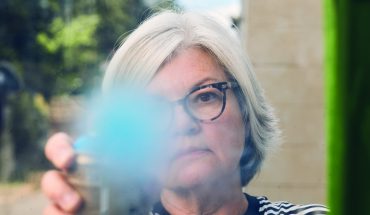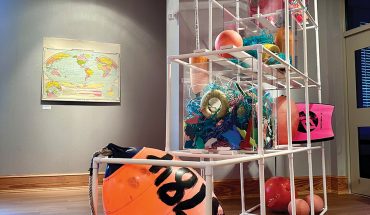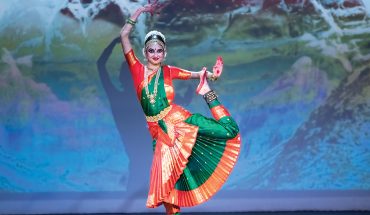by Ippy Patterson
I have a sheet of parchment with my ancestors’ names scrawled across its surface, a large chart made in the 1950s and ’60s by my great-uncle Bernard Knollenberg, an American historian. The tree was a gift to his wife, Mary Tarleton Knollenberg, my mother’s aunt.
At the top are the names of her parents (known as “Ma” and “Pa”) and spreading branches that trace their two families back to early Dutch and English people in Manhattan on one side, and early English settlers of Virginia on the other.
Their lives are recorded with dates. Talk to me, I’ve wanted to say. Who are these people? I can only learn that it was spring or fall when they came or went, that a mother lived only a short while after her daughter was born, that a middle-aged son barely outlived his old mother.
But a recent discovery has illuminated a branch of this tree: doing research for a talk (I am a member of the club for whom public speaking ranks higher than fear of death) I came upon hidden treasure that linked four women from four generations by more than kinship alone.
__________________________
Because my great-aunt and great-uncle had no children of their own – and because my parents lived with them when my father was in graduate school, and my mother pregnant with me – the two of them became my second set of parents, fairy god parents really. My sister and I called them Grandmary and Uncle Knollie.
When Grandmary died she left me remarkable things, including almost all of the sculpture she had created. But one of her most lasting, most critical gifts is intangible: my memory of the force with which she expressed herself, the power of her personality.
Grandmary was a strong, graceful woman who swept through rooms like a queen. She said startling, sometimes caustic things, and spoke the truth – or what she perceived as the truth.
In my eyes she seemed invincible, a superwoman. A short walk from her house stood a studio with a massive sliding door that opened seven feet wide, allowing a wheeled table to move in and out, carting pieces of stone for her to carve. On the shelves inside this room were figures she had made: outstretched hands, rearing stallions, meditative heads, yearning women. Some of these works had been shown at the Whitney and Brooklyn Museums. But she spent years in her studio feeling tormented, and had destroyed many of her own creations.
Her brother (and my grandfather), Gil, was a retired patent attorney for GE who followed the stock market from a wing-backed chair in a room with a chiming brass mantle clock and African violets. I seldom interrupted him for fear of feeling foolish.
This brother and sister, Gil and Mary, grew up in their grandfather’s house in Great Neck, Long Island, the town that served as F. Scott Fitzgerald’s West Egg in The Great Gatsby. For ten years, they were each other’s sole companions. He was a year older and faster, stronger, better at almost everything. When a boy his own age moved in next door, Gil dropped Mary. Her brother’s rejection and her mother’s complicated and conditional love set in motion her lifelong challenge to compete as a woman in a man’s world.
__________________________
When I was 34, living near her in Connecticut and illustrating The New York Times garden column, Grandmary, then 84, gave me a copy of An Island Garden by the poet Celia Thaxter that had belonged to her mother, Ma. Inside the pages there were the dried petals of a poppy from Thaxter’s garden, still faintly pink. Ma had known Celia Thaxter and several of her illustrious friends including the painter Childe Hassam. I was just becoming a gardener at that time myself and felt the first stirrings of a connection to the Ma I had only known from stories featuring her haughtiness.
Grandmary told me that Ma had illustrated all the flowers of Long Island for the Great Neck Public Library. I drove there to find them and was told by the librarian that they had been returned to the family long ago. It seemed odd that no one had ever mentioned this to me before.
Also odd was a discovery I made many years later, after my own mother had died. Like Grandmary, my mother had a powerful personality and spoke in outbursts of criticism and enthusiasm; but she had no interest whatever in family history. When I was growing up, she said little about her own mother and was at odds with her father.
Just days after her death, I was alone, rummaging through her house and came upon a small bag far in the back of a drawer. Inside this burgundy pouch was a miniature painting – two inches by three inches – of a young woman in an oval gold frame. The work, done with painstaking care and skill, was tranquil and quiet. Her dress, from the 1920s, was pale yellow. She was wearing pearls.
I stared at her face. The right side of her mouth tugged down slightly and her nostrils – each less than half a millimeter – didn’t match. I knew this face and I knew the painter. This was Ma’s portrait of Muriel, my mother’s mother, whose beautiful face had been subtly altered in a car crash. It was painted the day she married my grandfather. Ma had taken great pains – it seemed to me an act of love – to capture precisely the face of her son’s bride.
__________________________
An art show, Modern Figures, opened this past October at the Florence Griswold Museum in Old Lyme, Conn.; it included almost all of my great aunt’s sculpture, including a figure of my mother pregnant with me. It hurts me to realize how unable I was to appreciate this statue while my mother was alive. For several months I was almost continually aware that the opening was approaching, constantly preoccupied with thoughts about the women in my family.
What was it that had made Grandmary feel her mother, Ma, was a failed mother, and made Grandmary feel that being a woman was second to being a man? Did she not feel fortunate that her mother was also an artist? A week before traveling to the museum to give a talk, I Googled Ma’s name: Plympton.
It was as though Ma was trying to find me.
On my computer screen appeared digitized versions of hundred-year-old books that this woman, born in 1866, had written and illustrated, books for children, for young girls, some of them available on the shelves nearby at the UNC Chapel Hill Library. She had produced 12 books before she married at the age of 35, the first two of these done when she was only 15. Some of these books are being reprinted and sold online. I ordered copies, some old editions, some new. I read The Little Sister of Wilifred. As I followed the story, I felt I was listening not to my great grandmother whom I never knew, but to her daughter, Grandmary, and to my mother, and even to myself. Why had I never known about Ma’s accomplishments? Why were her books not in Grandmary and Uncle Knollie’s house? Why had I not found them earlier online?
There was a simple answer for the last question. Ma had invented a pen name and faked the date of her birth.
A.G. (for George) Plympton.
So she would sound like a man, so she would be older, faster, stronger.
__________________________
This experience exploring and pondering the lives of women in my family has been a kind of psychological origami, complex folds and changing shapes. When I saw Ma’s illustrations, I was thrilled by her skill and her interest in natural history. In The Glad Year Round, written and illustrated when she was 16, bees (with hairy legs!) hover over daisies. A pine branch shows each bundle having precisely four needles. Milkweed seeds drift across the page.
Yes, I had known Ma was an artist. Three watercolors lived in Grandmary’s guest room – only after I had rescued them from a closet. But I hadn’t really known. My looking at her books was like reading a narrative in reverse. I went back 134 years to find the beginning of a story told by bloodlines: my own pleasure, like Ma’s, in drawing what I see. But the discovery helped me understand something else, something about Grandmary: Drawings of little girls in flouncy dresses playing beneath a pine branch did not appeal to a modernist sculptor.




